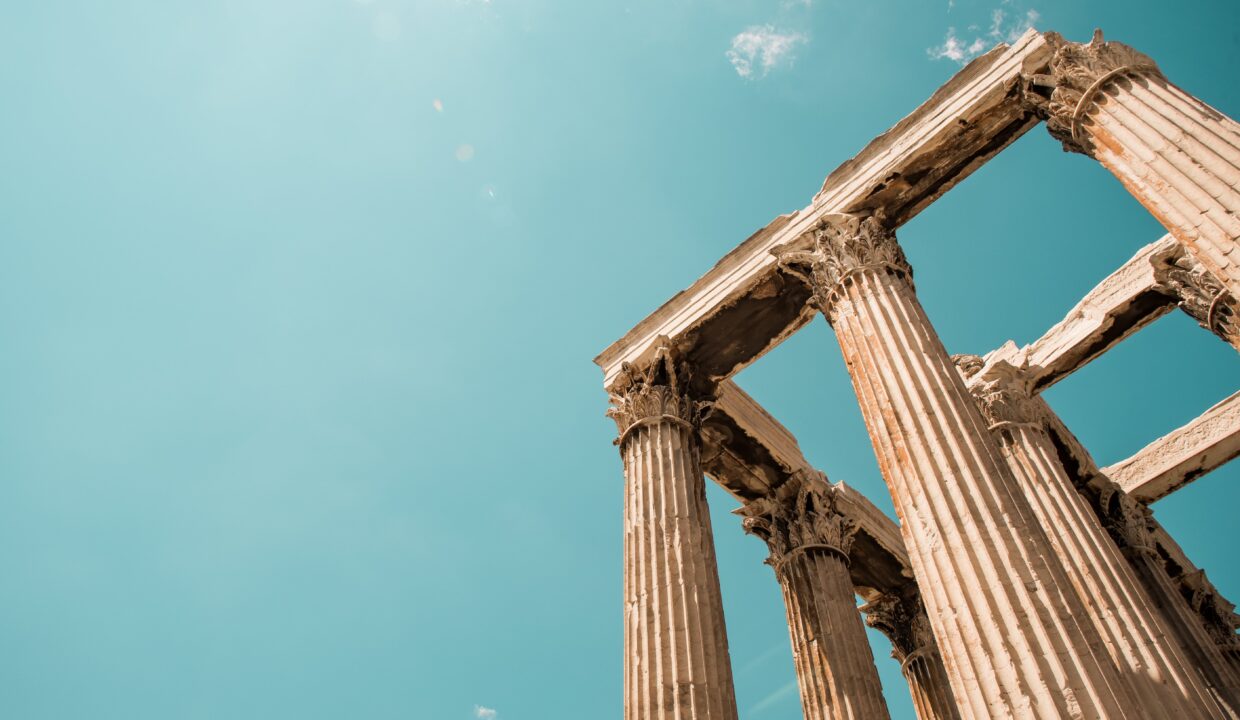
1. Acheron River
The Acheron river is located in the Epirus region of northwest Greece. It is 52 km (32 mi) long, and its drainage area is 705 km2 (272 sq mi).[1] Its source is near the village Zotiko, in the southwestern part of the Ioannina regional unit, and it flows into the Ionian Sea in Ammoudia, near Parga.
The Acheron also features prominently in Greek mythology, where it is often depicted as the entrance to the Greek Underworld where souls must be ferried across by Charon (although some later sources, such as Roman poets, assign this role to the river Styx).
2. Necromanteion
The Nekromanteion was an ancient Greek temple of necromancy devoted to Hades and Persephone. According to tradition, it was located on the banks of the Acheron river in Epirus, near the ancient city of Ephyra. This site was believed by devotees to be the door to Hades, the realm of the dead. The site is at the meeting point of the Acheron, Pyriphlegethon and Cocytus rivers, believed to flow through and water the kingdom of Hades. The meaning of the names of the rivers has been interpreted to be “joyless”, “burning coals” and “lament”, respectively.
A site in Mesopotamos, Epirus was proposed as the site of the Necromanteion in 1958, but this identification is now questioned.
3. Nikopolis
Nicopolis or Actia Nicopolis was the capital city of the Roman province of Epirus Vetus. It was located in the western part of the modern state of Greece. The city was founded in 29 BC by Caesar Augustus in commemoration of his victory in 31 BC over Antony and Cleopatra at the Battle of Actium nearby. It was soon made the major city of the wider region of Epirus. Many impressive ruins of the ancient city may be visited today.
While visiting the Ancient Nicopolis you should also go see:
- Octavian Caesar Augustus Monument in Nicopolis
- Nicopolis Basilica B.
- Roman Theater of Nicopolis
- Roman Stadium of Nicopolis
- Roman Nymphaion of Nicopolis
- Roman Odeum Of Nicopolis
4. Museum of Ancient Nikopolis
Until 1940, the ‘’Archaeological Museum of Preveza – Nicopolis’’ was located in an Ottoman mosque, in the city of Preveza, Greece. In 1940, the mosque was bombed by Italian aircraft and was partially destroyed. Some of the exhibits were stolen. After the Second World War, the mosque was demolished by the Greek state. In 1965 the state built a small Archaeological Museum inside the Byzantine walls of ancient Nicopolis. From 1998 to 2006 a new archaeological museum was built 5 km North of Preveza. In July 2009, the new Archaeological museum of Nicopolis was open to public. The Nicopolis Museum is open every day from 8 am to 8pm, including Saturday and Sunday.
5. Ancient Cassope
Kassope or Cassope was an ancient Greek city in Epirus. Kassope occupies a magnificent and remote site on a high platform overlooking the sea, the Ambracian Gulf and the fertile lands to the south, and with the slopes of the Zalongo mountain to the north. It is considered one of the best remaining examples of a city built on a rectilinear street grid of a Hippodamian plan in Greece.
6. Monument of Zalongo
The Monument of Zalongo is a 1961 monumental sculpture by George Zongolopoulos, commemorating the Dance of Zalongo, a mass suicide of women and children in 1803. It is located at 700 meters altitude on Mount Zalongo, near Preveza, Greece, from which it is visible. The closest village is Kamarina. One can access the monument from Saint Dimitrios Monastery (590 meters altitude), which leads to the top via a cobbled lane of 410 steps.
The monument depicts six abstract female figures holding hands. It is 18 meters in length, 13 meters high and is made of concrete supported by 4,300 whitish limestone blocks (40x30x25 cm each). The construction took six years, from 1954 to 1960, and was financed by two Pan-Hellenic student fundraising drives.
7. The Roman Aqueduct
On the north side of the valley of Louros, close to Agios Georgios village, north of Filippiada, the roman aqueduct of ancient Nikopolis dominates. The Roman Aqueduct travels a distance of around 50km, leaving its mark to Rizovouni, Thesprotiko, Stefani, Skala Louros, Sfinoto, Oropos, Archaggelos – Nea Sinopi and Nikopoli. The roman aqueduct was constructed after the foundation of Nikopolis by Octavian Augustus (1st century BC – 1st century AD) according to the prevailing view, while younger researchers consider possible that the construction was made in the years of Adrianos (2nd century AD). Julian the Emperor took care of it, but after half of the 5th century AD it stopped functioning.
The aqueduct is consisted of a pipe that carried the water with the method of height difference from Louros sources to the two tanks of Nymphaeo and Nikopolis. The pipe was constructed in three ways:
- By carving a ditch with an arched sealed cover and square openings of ventilation to slopes,
- By tunneling the area of Kokkinopilos,
- By constructing a number of columns on valley areas that bridged parts of the hills.
